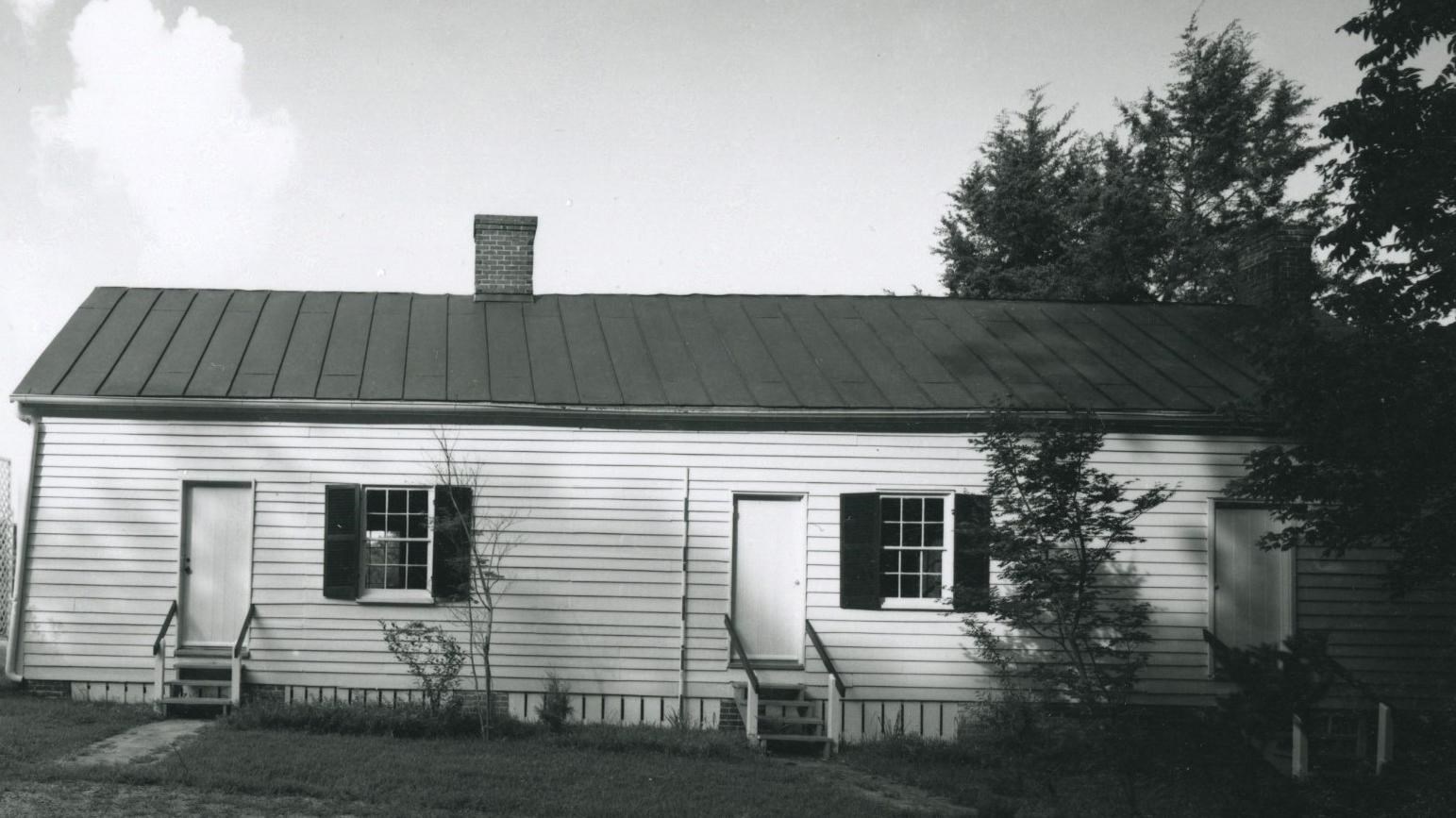Last updated: June 10, 2021
Place
Stop 13 Melrose Slave Cabins

NPS
Accessible Rooms, Audio Description, Cellular Signal, Historical/Interpretive Information/Exhibits, Wheelchair Accessible
The pair of white wooden slave cabins at Melrose sits apart from the rest of the estate. The enslaved people who lived there were not tied to the call of the slave bells on the back of the mansion. Their tasks probably included working with some of the livestock or working on the estate grounds. The cabin to the right originally consisted of three rooms or “cells” with no interior doors. This cabin would have housed three separate families. The other, two-room cabin, would have held two families.
The cabins offered a separate world with its own community. In 1856 two sets of young people had weddings at Melrose. The McMurrans’ daughter Mary married Farar Conner in the drawing room of the mansion. Patrick and Mime, described by Mary Louisa McMurran as “two we have reared and trained in the family – the children of old and favourite servants,” were married here as well. Mrs. McMurran wrote that after their wedding, Patrick and Mime “retired and passed the evening with some invited friends, and had a fine supper.” Viola, an enslaved cook at nearby Monmouth, served as bridesmaid; she was married to Marcellas, described as the “second waiter” at Melrose.
Like Alice Sims, Jane Johnson came to Melrose with the Davis family in 1866. She was still working as a cook for the family but was no longer enslaved. Tradition holds that she and her family lived in the larger three-room cabin. She had it altered by the addition of interior doors. Slave cabins in town or on estates such as Melrose had wooden floors, glass paned windows with exterior shutters, and some store-bought furnishings. These cabins were often nicer in comparison to those on remote plantations. A wooden privy building, or outhouse, sits behind these two slave cabins.
